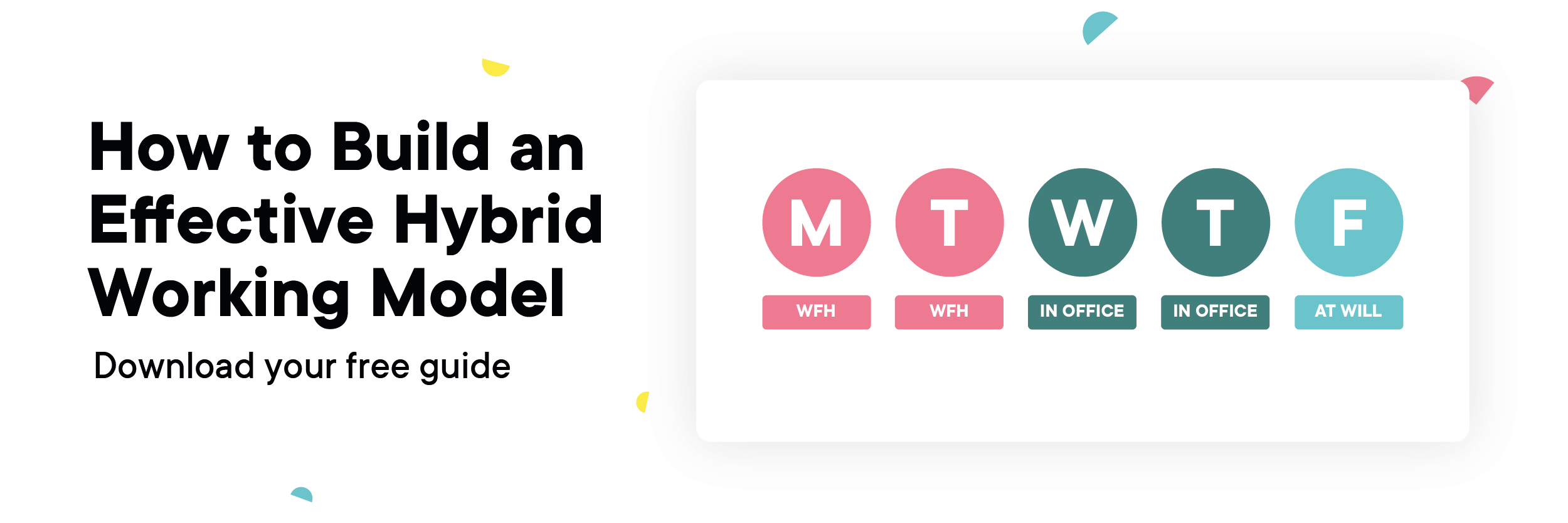It’s no secret that the hybrid working model is quickly taking over the workforce and becoming a priority for many navigating the current job market. The last two years have encouraged businesses and employees alike to re-think the typical Monday through Friday, 9-5 work day.
While it has been the structure for decades, the COVID-19 pandemic brought on new challenges that forced us to adapt, bringing the hybrid working model to the forefront. For many, returning to a full-time office environment is out of the question.
The hybrid approach quickly became popular for the reason that it enables the best of both worlds – the flexibility many employees are now seeking and an increase in productivity driving businesses forward.
What is hybrid working?
To put it simply, it’s a combination of both in-office working and remote working. The flexibility to work in a number of locations has both helped remove the total isolation many felt during the initial transition to remote work and the rigid structure of working in the office full-time. It's a middle ground that can work for both employees and employers.
What are the different hybrid working models?
There's no cookie-cutter approach to hybrid working, as each business will need a unique hybrid working model depending on its team and goals. However, there are a few popular options that many businesses are taking inspiration from.
3:2 split at company level
This approach tends to favour high-growth companies or start-ups due to the fact that it prioritises in-person communication, which can be beneficial when tackling the challenges that can come with growing pains or establishing an empire.
Example structure:
- 3 days a week in the office
- 2 days anchored by company moments (e.g. team lunch or all-hands meeting)
- 1 day decided by each team based on their own schedule
- Offer flexible working outside of core business hours
3:2 split at team level
This hybrid model is perfect for companies that have project-based teams producing high creative outputs or thrive on collaboration. This approach uses in-office time for creative collaboration while dedicating WFH days to work on deliverables.
Example structure:
- 2:3 split (whichever way is preferred)
- 1+ team day per week for brainstorming and collaboration
- Organise collaborative meetings for in-office days
Patterned hybrid (role dependant)
This option is best for established businesses with well-defined roles and set patterns in place. This would place specific teams or roles away from headquarters. This model can be effective when it comes to hiring talent outside of your typical radius, and for businesses with a high proportion of patterned specialist workers.
Example structure:
- Offering flex, fully remote, and office-based roles depending on the role’s demand
- Scaling down headquarters to accommodate for smaller in-office teams
- Honing in processes and procedures for different roles that will be fully remote
What are the advantages of a hybrid working model?
While many teams are still weighing up the pros and cons of implementing a hybrid working model, those still sitting on the fence risk falling behind. Here are a few hybrid working advantages that benefit both parties:
Increased productivity
Previously many employers were hesitant to incorporate hybrid or remote work based on the assumption that employees would work fewer hours, engage less or be less productive.
However, the shift away from rigid working hours and environments has boosted productivity in many cases, with employees entrusted to create their own schedules and manage tasks with greater flexibility.
Reduced costs
Office space is a huge expense for businesses, and it can feel like an even greater burden if only a small percentage of it is being used. Hybrid working models have provided an opportunity for leaders to reassess their office footprint, understanding how and why certain teams are using the space.
The result of this is that many businesses have been able to downsize, either bringing teams in on different days, adopting a hot-desking approach or creating smaller project-team HQs in different locations.
Increased employee satisfaction and retention
We’ve seen many people leave their roles to pursue fully-remote or hybrid options in pursuit of a healthier work-life balance and a greater purpose, bringing overall higher satisfaction to the workforce.
Since hybrid working brings more flexibility to their lives, employees feel more driven to show productivity from home and capitalise on their strengths. Working from home part-time or full-time also allows individuals to thrive in whichever environment works best for them.
Are there any disadvantages to hybrid working?
Although there are many positives to hybrid working, the line between home and work-life has blurred, which presents some obstacles for each individual to have the capability to separate their personal home life from their job.
Without the proper structure in place from employers, there is a risk of overworking and ultimately burnout, which is one of the biggest contributors to the sea of resignations businesses have seen over the last two years.
At Kitt, we help businesses find, design and manage spaces that are worth leaving home for. We work alongside teams to determine exactly what it is they need from their office, and build a bespoke workspace optimised for creativity, collaboration and culture.


